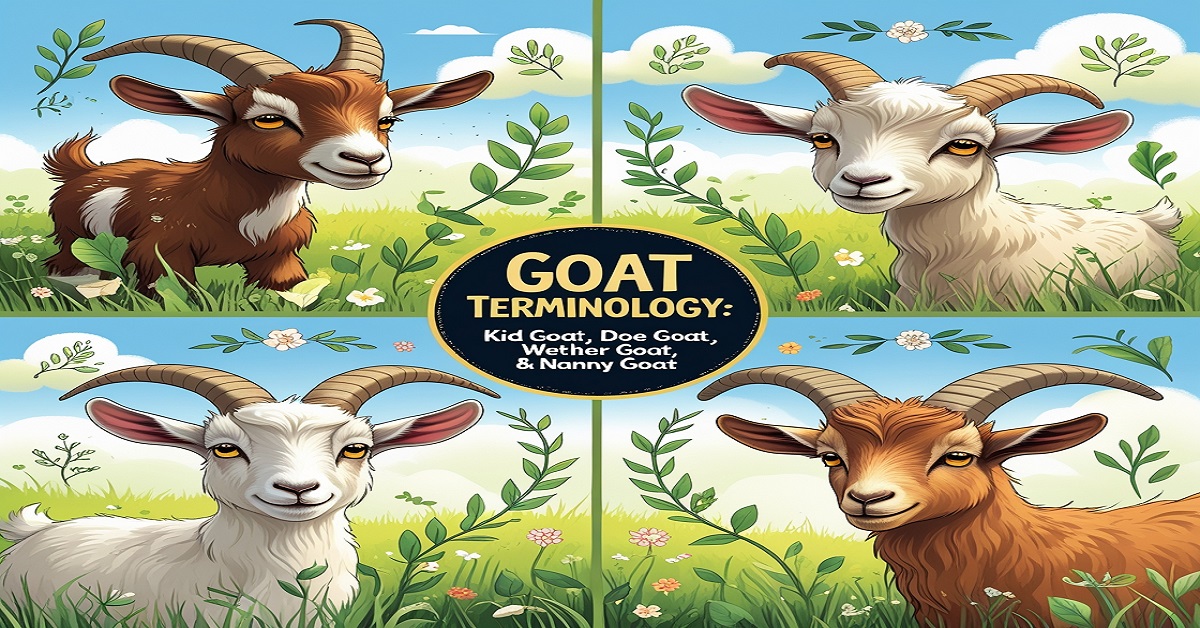Goats have long been revered for their versatility in providing milk, meat, and fiber. Whether you’re managing a farm or simply have a deep curiosity about these remarkable creatures, understanding goat terminology is essential for their proper care, breeding, and overall management. In this guide, we will explore key terms like Kid Goat, Doe Goat, Wether Goat, and Nanny Goat, explaining their significance, roles, and importance at various stages of a goat’s lifecycle.
By the end of this post, you’ll have a complete understanding of the terminology used in goat farming, and why it matters in your day-to-day operations.
Here’s a table with key facts and figures related to goat terminology:
| Term | Definition | Age | Primary Role | Common Uses | Key Characteristics |
|---|---|---|---|---|---|
| Kid Goat | A young goat, typically under six months of age. | Under 6 months | Growing, playful, developing immune system. | Sold for breeding, milk production, meat | Energetic, playful, dependent on milk |
| Doeling Goat | A young female goat, typically under one year of age. | Under 1 year | Developing, preparing for future breeding. | Breeding stock, future milk producers | Small size, immature reproductive organs |
| Buckling Goat | A young male goat, typically under one year of age. | Under 1 year | Growing, preparing for breeding or meat. | Meat production, future breeding bucks | Small size, immature reproductive organs |
| Yearling Goat | A goat between one and two years old. | 1 – 2 years | Transitioning from kid to adult. | Breeding, milk production, meat | Larger, stronger, often sexually mature |
| Doe Goat | An adult female goat, used for milk production and breeding. | Over 1 year | Breeding, milk production, caring for kids. | Milk production, breeding, fiber | Milk-producing, nurturing, docile |
| Buck Goat | An adult male goat, used for breeding. | Over 1 year | Breeding to produce offspring. | Breeding stock, meat production | Larger, more aggressive, musky odor |
| Wether Goat | A castrated male goat, typically non-breeding. | Any age (after castration) | Non-breeding, companion or meat production. | Meat production, companion animals | Calm, non-aggressive, easy to handle |
| Nanny Goat | Another term for an adult female goat (doe). | Over 1 year | Same as doe—milk production, breeding. | Companion, milk production, breeding | Nurturing, motherly, affectionate |
| Group of Goats | A collective term for a group of goats. | Any age | Herd management, collective behavior. | Herding, management | Herd, trip, or flock |
Introduction: The Importance of Understanding Goat Terminology
When it comes to raising goats, knowledge is power. Whether you’re new to goat farming or you’re a seasoned expert, it’s critical to understand the terminology associated with goats. This knowledge not only helps you communicate effectively but also ensures that you’re providing the appropriate care based on the age, gender, and reproductive status of each goat. Proper care, breeding decisions, and herd management can all hinge on how well you understand the terminology of these animals.
Understanding goat terminology also plays a crucial role in breeding programs, where selecting the right bucks for mating or identifying which does are ready for breeding is essential. Knowing whether a goat is a wether (castrated male) or a doeling (young female) can also influence decisions about raising them for milk, meat, or as companions.
In this post, we’ll explore the major terms used to categorize goats and break down each one in detail. From kids to yearlings, we’ll cover every aspect of goat terminology.
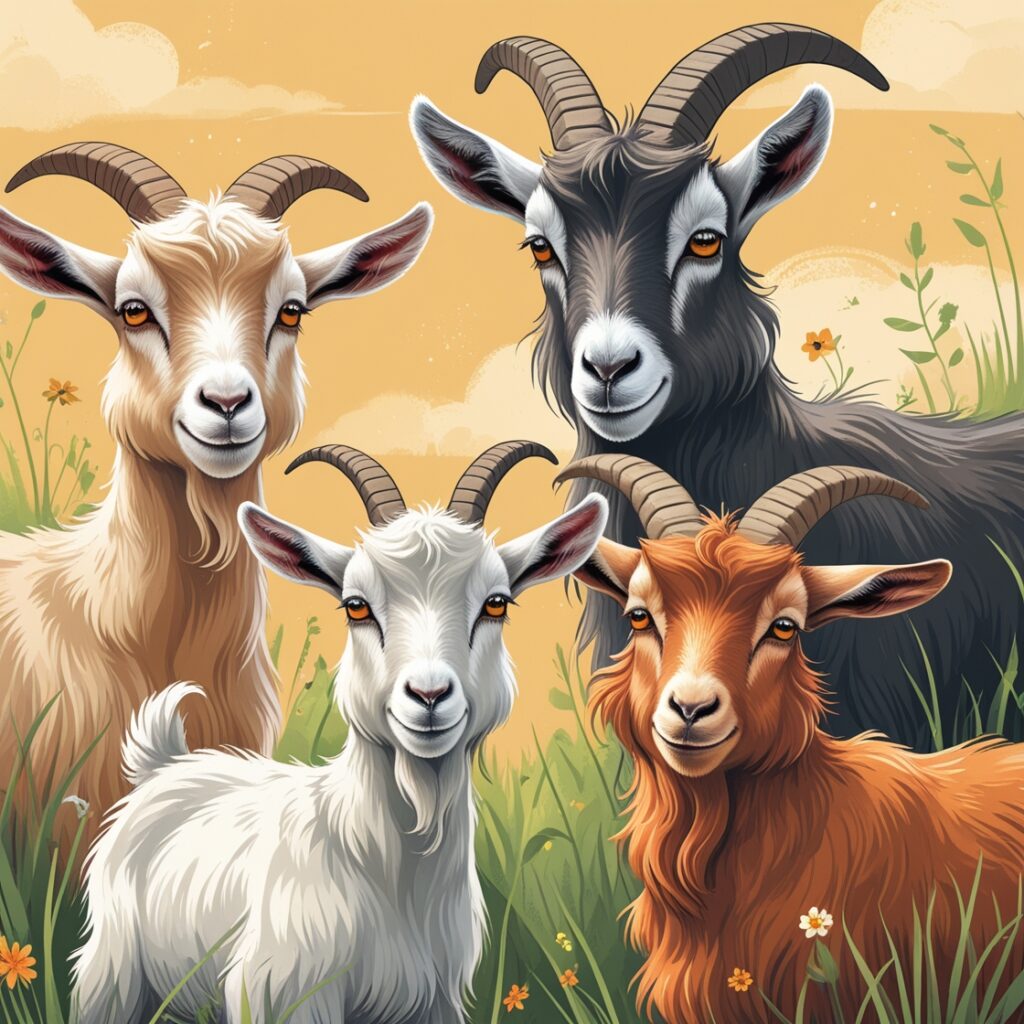
What Is a Kid Goat?
The term Kid Goat refers to a young goat, typically under six months of age. Kid goats are incredibly playful, energetic, and curious as they start exploring their environment. They are born from does after a gestation period of around 150 days, usually resulting in a single kid or twins.
Key Characteristics of Kid Goats:
- Age: Typically under six months.
- Size: Small in stature with soft, fine fur that changes as they mature.
- Behavior: Kids are often seen frolicking and playing with each other, exhibiting high energy and curiosity as they begin to socialize with their herd.
- Health: As vulnerable creatures, kids require extra care during the early stages of their lives. A common health concern for kids is Coccidiosis, a parasitic infection that can affect their digestive system. Preventive measures, including proper sanitation and appropriate feeding, are crucial for maintaining their health.
- Feeding: Kids rely heavily on their mothers’ milk for nutrition, but at around 8-12 weeks of age, they start to transition to solid foods such as hay and grains.
Kids are usually weaned off milk by the time they reach 12 weeks, depending on their breed and the care they receive. During this transition, kids begin to develop the skills needed to consume hay and grass.
What Is a Doe Goat?
A Doe Goat refers to an adult female goat, often used interchangeably with the term nanny goat in some regions. Does are highly valued for their milk production, as they are the primary source of dairy for those involved in dairy farming. In addition, they are the mothers of the next generation of kids, playing a key role in the breeding process.
Key Features of Doe Goats:
- Age: Typically over one year old.
- Physical Traits: Does are generally smaller than bucks and wethers, with sleek, slender bodies. They also have more refined, delicate facial features and smaller horns (if present).
- Behavior: Does are known for their docile and nurturing nature. They are incredibly protective of their offspring and will show signs of concern if they feel their kids are in danger. This makes them the primary caregivers in the herd.
- Milk Production: Doe goats are prized for their ability to produce milk, especially in breeds specifically selected for dairy production like the Nubian or Saanen. Their milk can be used for drinking, cheese-making, or even soap production.
- Breeding: Does reach sexual maturity around 7-12 months, but are typically not bred until they are closer to 18 months old. They go into heat (estrus) regularly, and once pregnant, they carry their kids for roughly 150 days. After giving birth, does will care for and nurse their kids until they are ready for weaning.
Because of their key role in reproduction and milk production, does are vital to any goat farm and are often given the most attention in terms of care and nutrition.
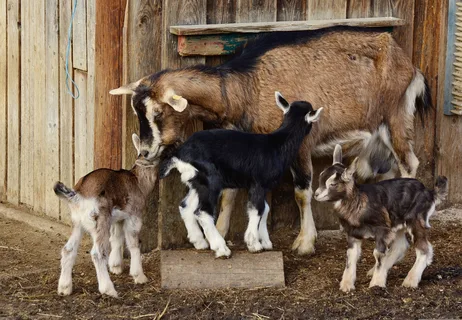
What Is a Nanny Goat?
Nanny Goat is simply another name for an adult female goat, specifically does. This term is more commonly used in rural areas and reflects the maternal role that female goats play in their herds. While doe is the formal term used in the goat industry, the term nanny emphasizes the nurturing qualities of female goats, especially when raising kids.
Nanny Goat vs Doe Goat:
- Both nanny goats and does refer to the same animal, but “nanny” is a more affectionate and informal term.
- The term nanny goat is often used when speaking of a goat’s role as a mother or caregiver, particularly when discussing their role in raising kids.
While the term “nanny” carries a certain warmth, it should be noted that it is not used as often in professional or technical settings. In most farming and breeding operations, doe goat remains the preferred term.
What Is a Wether Goat?
A Wether Goat refers to a castrated male goat. Castration involves removing the testicles of a male goat to prevent it from reproducing. Wether goats are typically calmer than intact male goats (bucks), making them easier to manage and more suited for certain roles, including companionship or meat production.
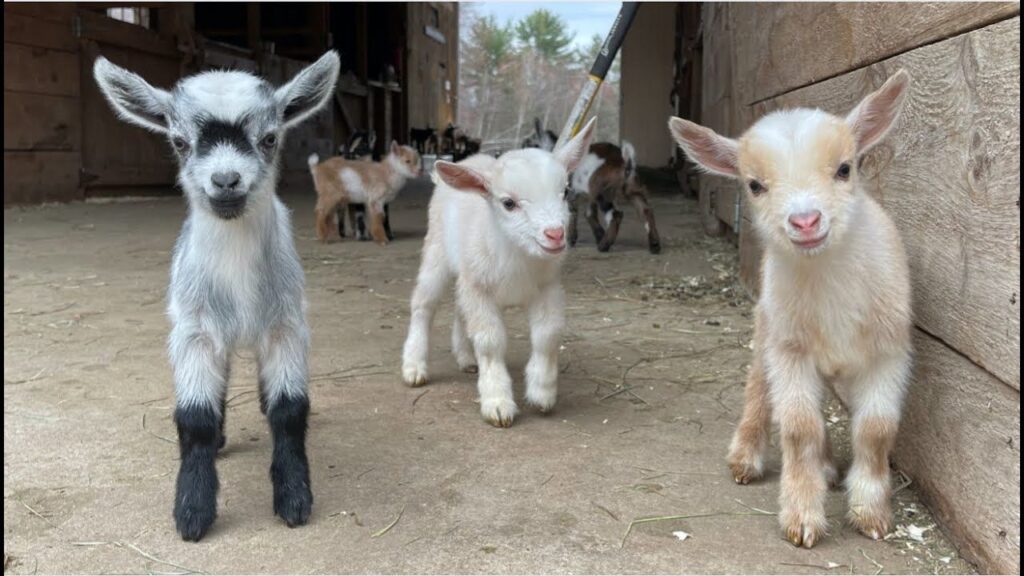
Why Castrate Male Goats?
- Behavioral Management: Wether goats tend to be less aggressive than their uncastrated counterparts, making them more manageable and suitable for herding with other goats.
- Health Benefits: Castration can prevent certain health issues related to the reproductive organs, including the risk of testicular cancer and prostate problems.
- Meat Production: Many farmers raise wethers for meat because they tend to produce leaner, milder-flavored meat compared to intact males. In fact, in some breeds, wethers are specifically raised for their meat, which is often used in ethnic cuisine.
Wethers are also used as companion animals because of their gentle and social nature. They can help keep other goats, particularly does and kids, company, reducing stress and promoting better herd dynamics.
What Is a Buck Goat?
A Buck Goat refers to an adult male goat, also known as a billy goat. Bucks play a critical role in goat farming by providing the genetic material for breeding and the continuation of the herd. However, bucks can also be known for their aggressive behavior, particularly during the breeding season.
Characteristics of Bucks:
- Size: Bucks are typically larger than does, with broader chests and thicker necks. They also tend to have more muscle mass, which contributes to their strength.
- Behavior: Bucks can become very territorial and aggressive, especially when they are in estrus (breeding season). They may exhibit behaviors such as headbutting or vocalizing loudly to attract does.
- Breeding: Bucks are used to impregnate does and carry the genetic traits that are passed down to their offspring. This makes them crucial to the genetic diversity and strength of the herd.
- Scent: Bucks produce a strong, musky odor during the mating season, which is another characteristic that distinguishes them from does.
While bucks are essential for reproduction, their temperament requires proper management. Farmers often keep bucks in separate enclosures to prevent unnecessary conflicts with the rest of the herd.
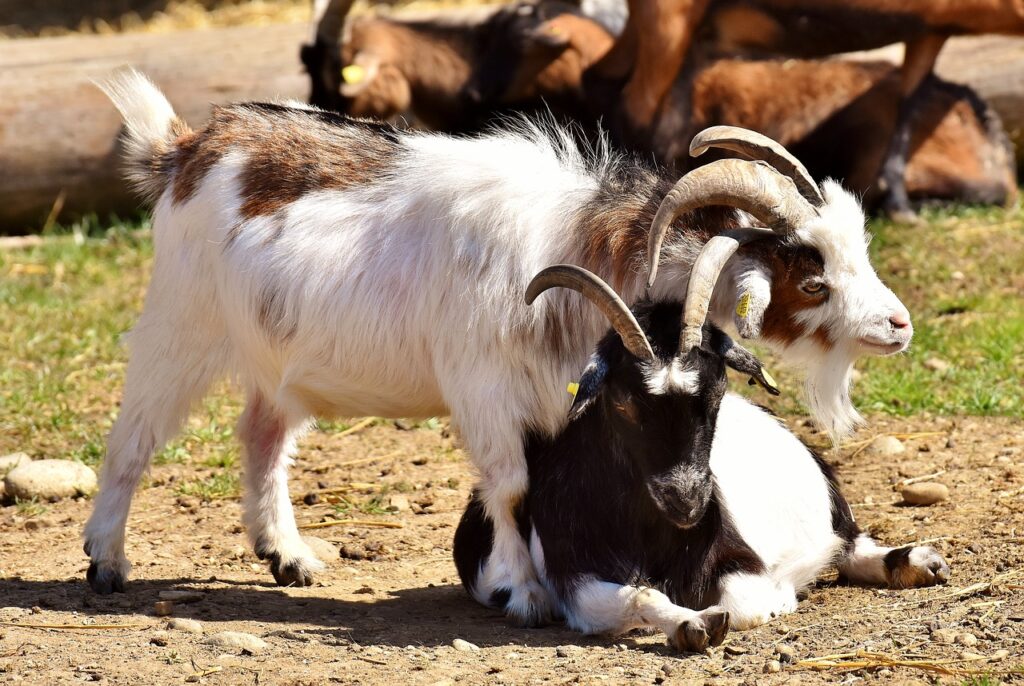
What Is a Doeling Goat?
A Doeling Goat refers to a young female goat, typically under one year of age. Doelings are in the transition phase from kids to mature does. They are often raised to become future milk producers or part of breeding programs.
Doeling Development:
- Physical Features: As doelings mature, they begin to show more defined physical traits of adult does, including a more prominent udder and the development of adult horns (if the breed allows).
- Behavior: Doelings are playful, energetic, and begin to develop their social structures within the herd. They learn from older does and bucks, and may sometimes be more independent than their male counterparts (bucklings).
- Reproductive Readiness: While doelings don’t usually breed until they are 18 months or older, some breeds may reach sexual maturity earlier. However, breeding too early can strain the doeling’s body and is generally avoided.
What Is a Buckling Goat?
A Buckling Goat refers to a young male goat, typically under one year of age. Bucklings are more independent than kids but haven’t yet reached the maturity needed for breeding. They are similar to doelings in that they are still growing into their adult roles.
Buckling Characteristics:
- Age: Typically under one year.
- Physical Features: Bucklings begin to show signs of the larger size and muscular build of adult bucks, although they are still growing.
- Behavior: They are energetic and playful, with some displaying dominance or aggression towards other males as they prepare for adulthood.
What Is a Yearling Goat?
A Yearling Goat is a goat that is between one and two years old. At this stage, goats are no longer considered kids but have not yet reached full adulthood. Yearlings are transitioning into their adult roles within the herd and may begin to reproduce, although they are often still in a growth phase.
Yearling Characteristics:
- Age: Between one and two years.
- Physical Features: Yearlings start to exhibit more adult features, including larger body size, developed horns (if applicable), and the beginning of secondary sexual characteristics.
- Breeding: Some yearlings may be able to breed, but many farmers prefer to wait until they are fully mature to avoid health complications.
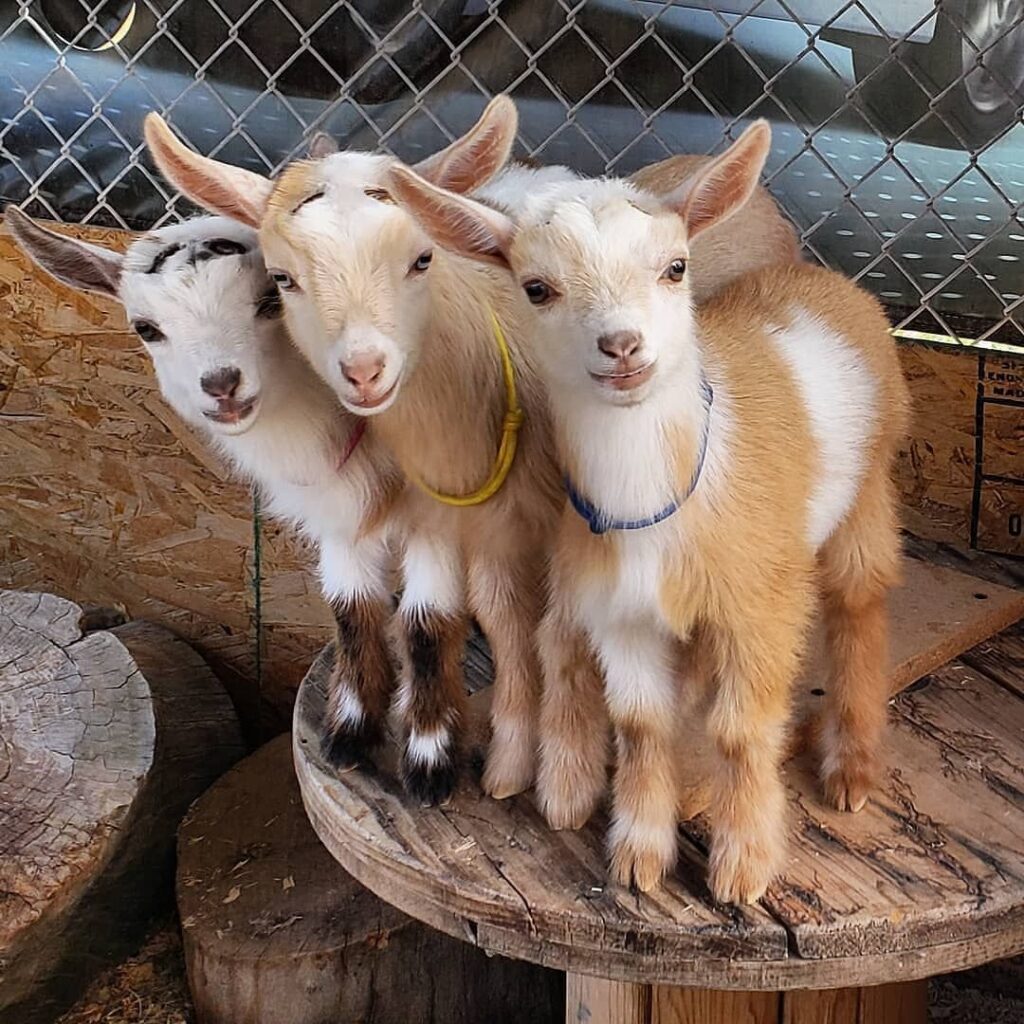
Doe vs Buck: What’s the Difference?
Understanding the differences between doe goats and buck goats is essential for managing a goat herd, especially when it comes to breeding and care.
Key Differences:
| Trait | Doe Goat | Buck Goat |
|---|---|---|
| Size | Smaller, more slender | Larger, bulkier |
| Temperament | Docile, nurturing | Aggressive, territorial |
| Role in Herd | Milk production, caregiving | Breeding |
| Physical Features | Smaller horns, smoother face | Larger horns, thicker neck |
| Scent | Generally neutral | Strong, musky scent during mating season |
The Role of Gender and Age in Goat Terminology
In goat farming, understanding gender and age-related terminology helps with selecting animals for breeding, meat production, and milk production. Here’s how age and gender influence a goat’s role:
- Kids are raised and cared for until they reach maturity.
- Does are the milk producers and primary caregivers of the herd.
- Bucks are kept for breeding and genetic diversity.
- Wethers are castrated and are often used for meat production or as companion animals.
By mastering these terms, you can ensure that your goats are properly cared for at every stage of their lives, whether you are raising them for profit or pleasure.
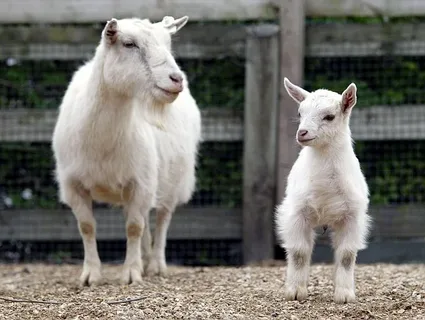
FAQs
What are the terminologies used in goat?
Goat-related terms include “Caprine” for the goat family, “Kid” for a young goat, “Wether” for a castrated male, “Doe” for a female goat, and “Buck” for a mature male.
What is the difference between a doe and a nanny goat?
A “Doe” refers to a female goat, while “Nanny” is a casual term used for the same, though “Doe” is the correct terminology.
What is a kid in goat terms?
A “Kid” is a young goat, regardless of sex, until it reaches about six months of age, after which it starts transitioning to solid foods.
What is a kid goat?
A “Kid” goat is simply a young goat, typically under six months old, and it is considered a baby until it matures.
What is a wether goat?
A “Wether” is a male goat that has been castrated, usually kept for meat, companionship, or as a non-breeding herd member.
What is the name of a baby goat?
A baby goat is called a “Kid,” while young females are “Doelings” and males are “Bucklings.”
What is a female goat called?
A female goat is called a “Doe,” and colloquially, she may also be referred to as a “Nanny.”
What is a nanny goat called?
A “Nanny” goat is just another name for a female goat, also known as a “Doe.”
What is a wether dam goat used for?
A “Wether” goat is typically used for meat production, sometimes for fiber, and can also be kept for weed control or as a pet.
What is a pregnant goat called?
A pregnant goat is still referred to as a “Doe,” and she is carrying kids until the birthing process begins.
Why is a baby goat called a kid?
The term “Kid” for a young goat has historical roots from Old Norse and Germanic languages, used since the 1200s.
Do female goats have beards?
Yes, both male and female goats can have beards, as well as “wattles”—small flaps of skin on their necks.
What is the difference between a nanny goat and a doe?
A “Nanny” goat and a “Doe” are the same, both referring to an adult female goat.
What is the opposite gender of a nanny goat?
The male counterpart to a “Nanny” goat (female) is called a “Buck” or “Billy.”
What is the difference between a goat and a kid?
A mature goat is typically a “Doe” or “Buck,” while a “Kid” is a young goat, under one year of age.
What is a doeling?
A “Doeling” is a young female goat that has not yet matured or been bred.
What is the difference between a Kid Goat and a Yearling Goat?
A “Kid Goat” is under six months old, while a “Yearling Goat” is between one and two years, transitioning to adulthood.
What is a Nanny Goat and is it the same as a Doe Goat?
A “Nanny Goat” is another name for a “Doe Goat,” both referring to an adult female goat.
What is the role of a Wether Goat in a herd?
A “Wether Goat” is a castrated male, often kept for meat or as a gentle companion within the herd.
What makes a Buck Goat different from a Doe Goat?
A “Buck Goat” is an adult male goat used for breeding, while a “Doe Goat” is a female, typically kept for milk and raising kids.
How do I identify a Doeling Goat?
A “Doeling Goat” is a young female under one year of age, typically raised for breeding or milk production.
Why is understanding goat terminology important?
Knowing goat terminology aids in proper herd management and ensures appropriate care based on their age, gender, and reproductive status.
What is the best use for a Buck Goat in farming?
A “Buck Goat” is primarily used for breeding, producing offspring with desirable traits for milk or meat production.
Can a Wether Goat be kept as a pet?
Yes, a “Wether Goat” is often a good pet due to its calm nature and non-aggressive behavior.
What are the health risks associated with Kid Goats?
“Kid Goats” are susceptible to Coccidiosis, a parasitic infection, requiring good care and vaccination for prevention.
How does a Yearling Goat differ from an adult goat in terms of care?
“Yearling Goats” still need special care for nutrition and health checks to ensure proper growth before reaching full adulthood.
What should I know when caring for a Nanny Goat?
A “Nanny Goat” needs proper nutrition for milk production, care during pregnancy, and ongoing health management.
How do I handle a Buck Goat during breeding season?
“Buck Goats” can become aggressive during breeding season, so managing them separately from the does is advisable to prevent stress and aggression.
What are the benefits of keeping a Wether Goat in a herd?
“Wether Goats” offer calm companionship, helping to stabilize the herd and reduce aggression among other goats.
Conclusion: Mastering Goat Terminology for Better Care and Breeding
Understanding goat terminology is essential for managing a successful goat operation, whether you are involved in breeding, milk production, or simply keeping them as pets. The terms Kid Goat, Doe Goat, Wether Goat, and Nanny Goat are more than just words—they represent important aspects of a goat’s lifecycle, behavior, and role in a herd. By familiarizing yourself with these terms, you can make better decisions regarding breeding, care, and management, ensuring your goats live healthy, happy lives.
Read more knowledgeable blogs on Flowy Magazine

James Clair is a passionate writer and researcher with a deep fascination for animal behavior and its intricate connection to human life. With a background in [relevant field of study, e.g., zoology, psychology, ethology], James has spent years studying the natural world, focusing on how animals’ actions and instincts impact human emotions, behavior, and society.
His expertise in [specific topics or regions of focus, e.g., canine psychology, animal communication, wildlife conservation] has led to numerous published works and collaborations with renowned researchers and institutions. Through his work at Flawy Magazine, James aims to bridge the gap between scientific research and public understanding, offering insightful, accessible articles that explore the complex relationship between humans and animals.
When he’s not writing, James enjoys [personal hobbies or interests, e.g., hiking in nature, volunteering at animal shelters, photography] and is an advocate for [cause or charity related to animals or conservation]. His mission is to inspire readers to see animals not just as companions or creatures of the wild, but as beings whose behavior holds valuable lessons for us all.
